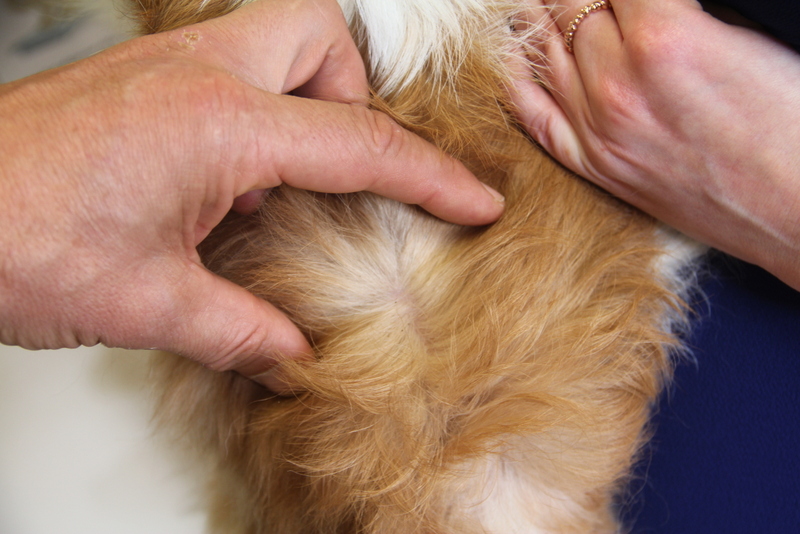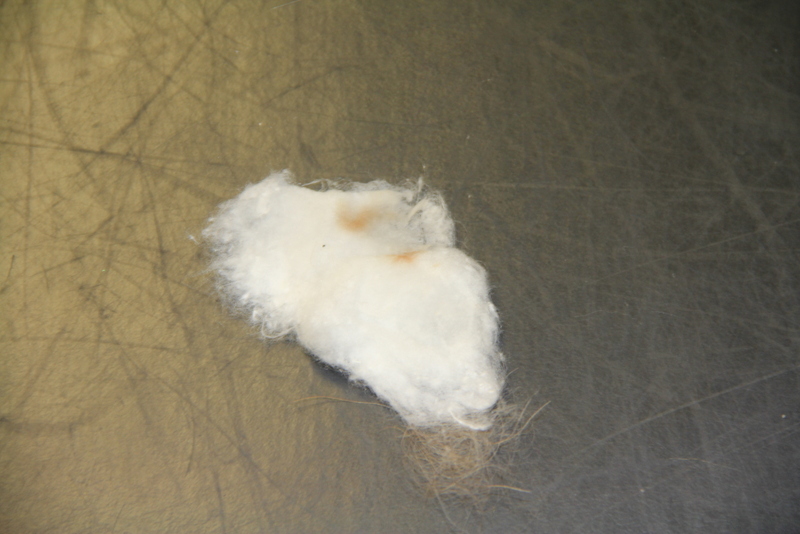
I’ve been seen a glut of fleas in my practice over the past week: this is no surprise. Fleas breed far more quickly in warm weather, and there has been a build up of the population of fleas in the environment over the summer months. The life cycle of the flea is dependent on environmental conditions. After feeding on an animal, female fleas jump off, and lay eggs that grow into young adult fleas. We are almost in October, when the weather will cool down, and the fleas outside will become inactive. Flea will still breed in centrally heated homes, but pets won’t bring fleas back with them after going outside. (Note: image credit above: Prof. Dr. H. Mehlhorn, Heinrich Heine University Düsseldorf)
A recent case study of fleas
Last week, a woman brought her small dog to me: he’d been itching a lot. She had searched for fleas but could find none. However she did find black specks in her dog’s coat, and when she Googled these, she discovered that this was “flea dirt”.

Flea dirt can be difficult to spot, but basically it is tiny black/ dark brown specks in a pet’s coat. These specks are “flea droppings”, left behind by fleas after they’ve fed on the animal’s blood. When you place these black specks onto a piece of moist tissue or cotton wool, they dissolve, creating reddish brown smudges, proving that they are made up of digested blood. This is absolute proof of fleas: if you find flea dirt, you need to treat your pet and house for fleas.

The woman last week went to the supermarket and bought “flea drops” to apply to her dog’s neck. The product label stated that they were “clinically proven”, they would “repel fleas” and they offered “up to twelve weeks’ protection”. Three days later, her dog was just as itchy, and there was just as much flea dirt in his coat. What could have gone wrong?
What’s wrong with supermarket flea treatments?
The problem is that one flea treatment is not like another. The flea drops that she had bought did not kill fleas: they just “repelled them”. The ingredients were not potent enough for a significant flea problem such as the one she was dealing with. As a lay person, it was difficult for her to understand this from looking at the label.
When she brought the dog to me, I explained that vets now stock many different types of potent anti-flea products, and each situation may require a different answer. There’s a wide range of highly effective topical spot-on products and sprays that last for up to two months: some kill only fleas, others include roundworms, and others include lungworm. There are also new oral treatments, including a tablet that provides three months continual protection against fleas.
Anti-flea products from vets tend to be the latest on the market so they’re often more effective than older products
All of these products work well, and they are safe, as long as you follow the instructions on the label. Like any drug, there’s a small risk of individual reactions in some pets. Read the data sheet of the specific product to find out more, but remember that any animal medicine could not get over the hurdles to licensing if they had not been proven by detailed studies that show that they are safe when used as directed. And if your pet does ever have any sort of odd reaction, be sure to insist that your vet reports this, so that the authorities are aware. If it was found that any product was causing a particular problem, this would then be added to the data sheet to alert other people.
You do need to be careful, of course, to use products as specified: if flea drops for a large dog were applied to a cat, there could be a serious problem. Cats have died after owners have done this: it’s a serious issue. That’s why many of these products are sold through vets, to ensure that there is professional supervision of their use.
Some pet owners just treat their pets when they have fleas, but after a bad experience with an outbreak in their home, many people apply treatments routinely, on a continual basis, to prevent the problem. It’s a personal choice whether or not to do this.
Don’t forget to treat the home as well as the animal
As well as treating pets, the place where they live needs to be dealt with. Adult female fleas lay eggs everywhere: in carpets, soft furniture and cracks in floorboards. Flea eggs can remain quiescent for up to six months. If your animals have had fleas, your home is almost certainly infected. If you just treat the pet and no more, the problem is certain to recur as the flea eggs in the house hatch out. You need to use an effective environmental spray that kills adult fleas as well as preventing flea eggs from developing into young adult fleas.
Of course it is possible to take a “natural” route, using herbs, thorough cleaning and plant extracts. The problem with this approach is that it is laborious and time consuming. Most people want a “quick and effective” fix, and that’s where modern parasite control comes in. As long as you use it wisely, it’s safe (it wouldn’t be allowed on the market otherwise) and it works well.
I discussed flea control on the Pat Kenny Show on Newstalk this week: you can listen by following the link below.




Please note that I am unable to answer veterinary questions in comments. If you have questions or concerns about your pet's health it is always better to contact your vet.